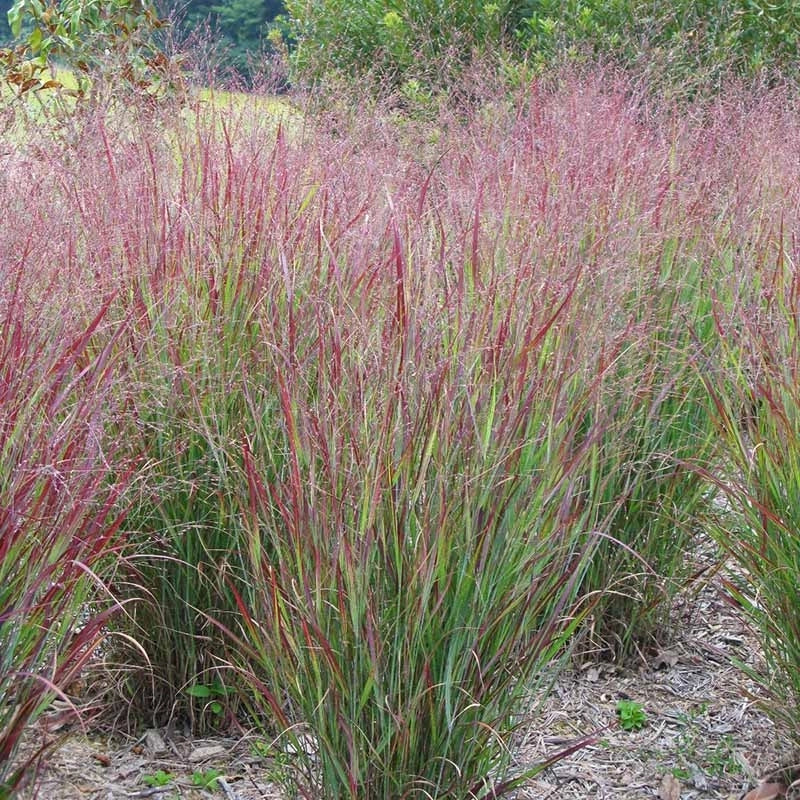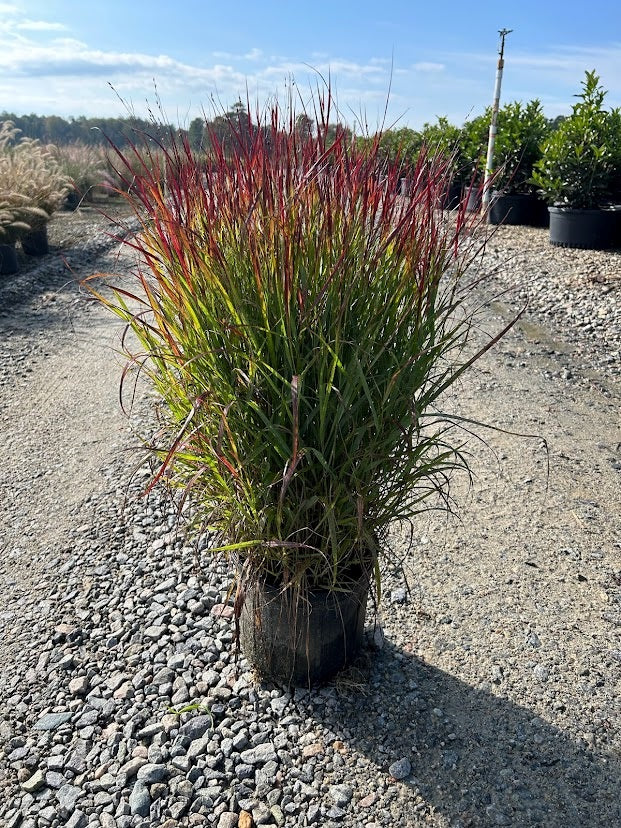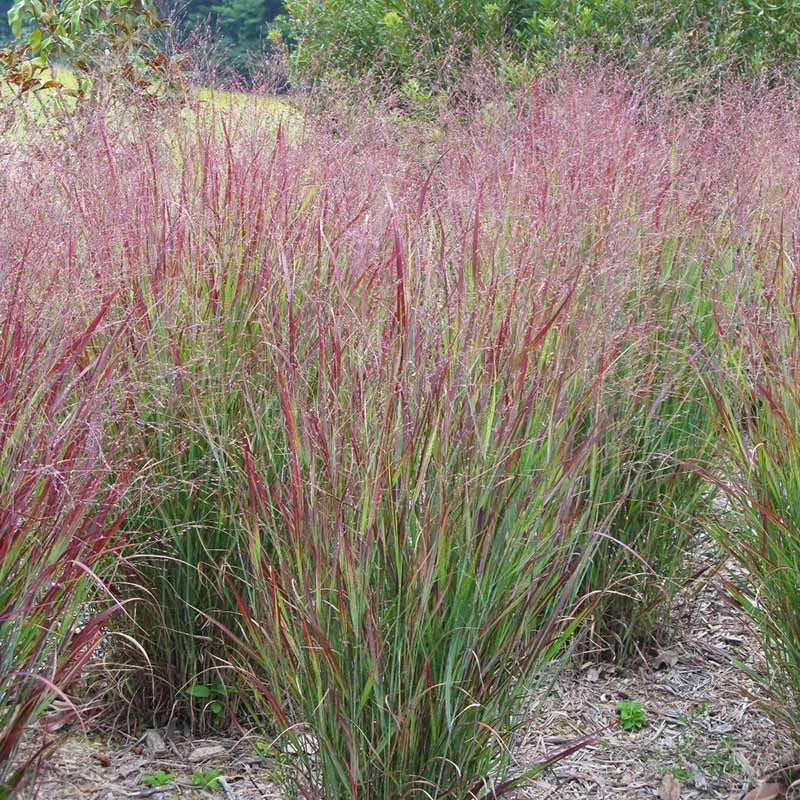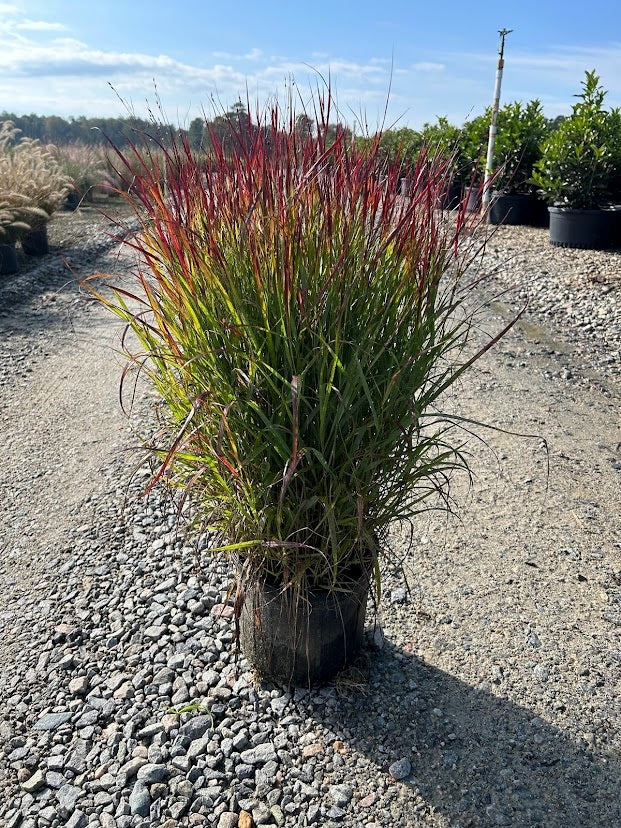Shenandoah Switch Grass (Panicum virgatum 'Shenandoah') – 3 Gallon
Shenandoah Switch Grass (Panicum virgatum 'Shenandoah') – 3 Gallon
18 in stock
Full sun and Partial shade
Couldn't load pickup availability
Shenandoah Switch Grass (Panicum virgatum 'Shenandoah') – 3 Gallon
Description
Shenandoah Switch Grass is a striking, upright ornamental grass prized for its vibrant red-tinted foliage that intensifies to deep burgundy as the season progresses. Airy, reddish-pink flower panicles appear in late summer, adding movement and texture to the landscape and fading to a wheat color in fall. This native, clump-forming perennial is exceptionally hardy, drought tolerant once established, and deer resistant. Its seeds provide food for birds, and the dramatic fall color brings four-season interest to borders, mass plantings, containers, and wildlife-friendly gardens. Easy to grow and low maintenance, Shenandoah Switch Grass thrives in full sun and adapts to a wide range of soils, including clay and sandy sites.
Key Features
- **Botanical Name:** Panicum virgatum 'Shenandoah'
- **Common Name:** Shenandoah Switch Grass
- **Container Size:** 3 Gallon
- **Mature Size:** 3–4 ft tall, 2–3 ft wide
- **Growth Habit:** Upright, clump-forming
- **Foliage:** Green with red tints in summer, deepening to burgundy/coppery orange in fall
- **Bloom Color:** Airy reddish-pink panicles in late summer, fading to wheat in fall
- **Bloom Time:** Late summer to fall
- **Sunlight:** Full sun to part sun (best color in full sun)
- **Soil:** Well-drained; tolerates clay, loam, sand, and wet soils
- **Water Needs:** Low to moderate; drought tolerant once established
- **Hardiness Zones:** USDA 4–9
- **Maintenance:** Very low; cut back old foliage in late winter or early spring
- **Special Features:** Dramatic foliage color, deer resistant, drought tolerant, erosion control, attracts birds and pollinators, easy care, native plant
Care Instructions
1. **Planting:**
- Choose a sunny location with well-drained soil.
- Space plants 2–3 feet apart for borders or mass plantings.
2. **Watering:**
- Water deeply and regularly during the first growing season.
- Once established, water when the top 2 inches of soil are dry.
3. **Pruning:**
- Cut back old foliage in late winter or early spring before new growth emerges.
4. **Fertilizing:**
- Apply a general-purpose fertilizer just before new shoots appear in late winter or early spring.
5. **Dividing:**
- Divide clumps every 3–4 years to maintain vigor.
Landscape Uses
- Borders and mixed beds
- Mass plantings and drifts
- Containers and patio planters
- Prairie, meadow, and native gardens
- Erosion control on slopes
- Wildlife and pollinator gardens



